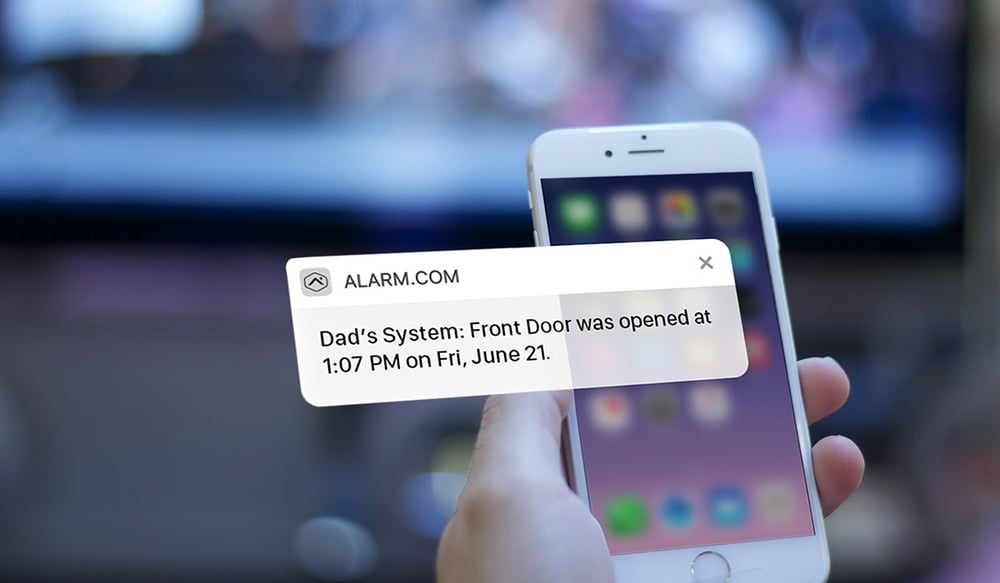4 Facts About Personal Emergency Response Systems
Security Systems May 25, 2018 1:00:00 PM General Security 4 min read

You’ve likely heard of a personal emergency response system (PERS) before—it’s a device enabling people to request help in the case of emergencies, without requiring a phone. Around since the 1970s, personal emergency response systems have been steadily growing in popularity, and in recent years, have undergone improvements to further assist users.
IF YOU’RE INTERESTED IN LEARNING MORE ABOUT THESE SYSTEMS, WHETHER FOR YOURSELF OR A LOVED ONE, HERE ARE FOUR FACTS TO KEEP IN MIND:
1. They were designed for older and/or sick people.
Personal emergency response systems, formerly known as “emergency dialers,” were originally intended to assist senior citizens and/or those with health issues. As described in the October 1975 edition of Popular Science magazine: “For the elderly or sick, the Phone Care delivers emergency phone messages to preprogrammed numbers at the touch of a remote transmitter button worn by the user.”
Consequently, most response system users today are elderly. According to a study shared by the U.S. National Library of Science, “Chronic medical conditions account for the majority of healthcare utilization in older patients using PERS.”
Many utilize this technology because they live alone and want to maintain their independence, while also having access to professional assistance in the event of an emergency. If someone slips, falls, and breaks a leg or hip, for example, he or she can simply press the button on a PERS pendant or wristband to alert an emergency call specialist, rather than attempt to reach a phone.
This brings us to our next fact.
2. Personal emergency response systems are used most in the case of falls.
The aforementioned study, which was conducted from 2011 to 2015, also evaluated the kinds of incidents dictating such systems' use, finding that the majority of incidents—43.2 percent—involved falls. The second most common type involved “physical and psychological symptoms (such as breathing, pain, bleeding/injury, illness, dizziness, confusion and anxiousness),” at 42.7 percent. The remaining cases encompassed personnel requests, equipment problems, and accidental alerts, among others.
The study also identified time periods of ownership and use among participants.
“Of the 2643 patients included in the analyses, 97% (n = 2555) utilized PERS for a median of 3 years (interquartile range, 1–5)," it stated. "28.4% of patients have button utilization data for all 5 years of the evaluation period, 22.3% between 3–4 years of button utilization data, and 49.4% have 1–2 years of button utilization data,” it explains.
3. Some can be integrated with wellness systems.
Certain personal emergency response systems can be integrated with wellness systems, expanding the technology’s capabilities.
Wellness systems provide a network of safety monitoring capabilities, including activity trackers, real-time notifications and other automated features—valuable tools for PERS users' loved ones, which enable them to monitor their daily habits and receive alerts if anything atypical is detected. For instance, if your elderly mother usually gets out of bed between 6 a.m. and 6:30 a.m. but you receive a notification one day that she's still in bed at 7 a.m. via the wellness system, it could be cause for concern. These helpful alerts are viewable via smartphone, iPad or desktop computer, too, which makes checking them easily and ultra-convenient.
Wellness systems also often include home security and automation features—elements especially advantageous for elderly users. Not only will they be safer in their homes, with fire and burglary alarm components, but they'll no longer need to remember to perform certain tasks around the house, such as locking the doors at night or turning off the kitchen light. Instead, these duties will be done for them, automatically.
4. The industry is expected to grow.
Personal emergency response systems are already popular among older consumers, and that doesn’t seem to be changing any time soon. In fact, usage is projected to increase, especially through the next five years.
A September 2017 analysis via market research reporting firm ReportsnReports distributed by PR Newswire predicts explosive growth during this time, stating: “The personal emergency response system (PERS) market is forecast to reach $9.22 billion by 2023 from $6.18 billion in 2016 at a CAGR [compound annual growth rate] of 5.7% during (2017-2023) driven by the increasing aging population and adoption of PERS as a supportive tool for independent living, technological developments in healthcare wearable, advancement in communication and connectivity technologies and mobility benefits.”
It notes that while utilized internationally, usage is highest in Europe and North America, with the latter holding “the largest share of the PERS market in 2016.” Still, Asia Pacific will likely catch up rather quickly, as the region “is expected to register the highest CAGR [compound annual growth rate] in the PERS market during the forecast period,” continues the report.
General Security provides Alarm.com wellness systems to our customers, helping to ensure their loved ones are safe and always being looked after. Request a quote from us today to find out how we can assist you.

